Comparative Analysis of Hydraulic Fracturing Wastewater Practices in Unconventional Shale Development: Newspaper Coverage of Stakeholder Concerns and Social License to Operate
Abstract
:1. Introduction
2. Social License to Operate (SLO)
2.1. The Concept of SLO
2.2. Related Concepts
2.3. Obtaining SLO
3. Materials and Methods
3.1. Research Context
3.2. Data Analysis
3.3. Data Sources
4. Results
4.1. Media Coverage of SLO and Accountability Concepts
4.2. Media Coverage of Matters of Concern to Stakeholders
4.3. Media Coverage of Specific Wastewater Concerns
5. Discussion
5.1. Synthesis of Results
5.2. Implications for Industry Operators and Regulators
5.3. Opportunities for Future Research
6. Conclusions
Acknowledgments
Author Contributions
Conflicts of Interest
Abbreviations
| AB | Alberta |
| BC | British Columbia |
| CR | Corporate responsibility |
| CSR | Corporate social responsibility |
| NY | New York |
| PA | Pennsylvania |
| SLO | Social license to operate |
| TX | Texas |
| WV | West Virginia |
References
- Voser, P. The Natural Gas Revolution. Energy Strategy Rev. 2012, 1, 3–4. [Google Scholar] [CrossRef]
- Wang, Q.; Chen, X.; Jha, A.N.; Rogers, H. Natural Gas from Shale Formation: The Evolution, Evidences and Challenges of Shale Gas Revolution in United States. Renew. Sustain. Energy Rev. 2014, 30, 1–28. [Google Scholar] [CrossRef]
- Birol, F.; Corben, J. Are We Entering a Golden Age of Gas? Special Report; International Energy Agency: Paris, France, 2011; p. 131. [Google Scholar]
- Toscano, A.; Bilotti, F.; Asdrubali, F.; Guattari, C.; Evangelisti, L.; Basilicata, C. Recent Trends in the World Gas Market: Economical, Geopolitical and Environmental Aspects. Sustainability 2016, 8, 154. [Google Scholar] [CrossRef]
- MIT. The Future of Natural Gas; Massachusetts Institute of Technology Energy Initiative: Cambridge, UK, 2010. [Google Scholar]
- Stephenson, E.; Shaw, K. A Dilemma of Abundance: Governance Challenges of Reconciling Shale Gas Development and Climate Change Mitigation. Sustainability 2013, 5, 2210–2232. [Google Scholar] [CrossRef]
- Howarth, R.W.; Ingraffea, A.; Engelder, T. Natural gas: Should fracking stop? Nature 2011, 477, 271–275. [Google Scholar] [CrossRef] [PubMed]
- Jackson, R.B.; Vengosh, A.; Darrah, T.H.; Warner, N.R.; Down, A.; Poreda, R.J.; Osborn, S.G.; Zhao, K.; Karr, J.D. Increased stray gas abundance in a subset of drinking water wells near Marcellus shale gas extraction. Proc. Natl. Acad. Sci. USA 2013, 110, 11250–11255. [Google Scholar] [CrossRef] [PubMed]
- McKenzie, L.M.; Witter, R.Z.; Newman, L.S.; Adgate, J.L. Human Health Risk Assessment of Air Emissions from Development of Unconventional Natural Gas Resources. Sci. Total Environ. 2012, 424, 79–87. [Google Scholar] [CrossRef] [PubMed]
- Muresan, J.D.; Ivan, M.V. Controversies Regarding Costs, Uncertainties and Benefits Specific to Shale Gas Development. Sustainability 2015, 7, 2473–2489. [Google Scholar] [CrossRef]
- Freeman, R.E. Strategic Management: A Stakeholder Approach; Pitman: Boston, MA, USA, 1984. [Google Scholar]
- Alessi, D.S.; Zolfaghari, A.; Kletke, S.; Gehman, J.; Allen, D.M.; Goss, G. Comparative analysis of hydraulic fracturing wastewater practices in unconventional shale development: Water sourcing, treatment and disposal practices. Can. Water Resour. J. 2016, submitted. [Google Scholar]
- Notte, C.; Allen, D.M.; Gehman, J.; Alessi, D.S.; Goss, G. Comparative analysis of hydraulic fracturing wastewater practices in unconventional shale developments: Regulatory regimes. Can. Water Resour. J. 2016, in press. [Google Scholar]
- Raufflet, E.; Baba, S.; Perras, C.; Delannon, N. Social License. In Encyclopedia of Corporate Social Responsibility; Idowu, S.O., Capaldi, N., Zu, L., Gupta, A.D., Eds.; Springer: New York, NY, USA, 2013; pp. 2223–2230. [Google Scholar]
- Gunningham, N.; Kagan, R.A.; Thornton, D. Social License and Environmental Protection: Why Businesses Go beyond Compliance. Law Soc. Inq. 2004, 29, 307–341. [Google Scholar] [CrossRef]
- Joyce, S.; Thomson, I. Earning a Social Licence to Operate: Social Acceptability and Resource Development in Latin America. CIM Bull. 2000, 93, 49–53. [Google Scholar]
- Thomson, I.; Boutilier, R. Social License to Operate. In SME Mining Engineering Handbook; Darling, P., Ed.; Society for Mining, Metallurgy, and Exploration: Englewood, CO, USA, 2011; pp. 1779–1796. [Google Scholar]
- Loewenstein, J.; Ocasio, W.; Jones, C. Vocabularies and Vocabulary Structure: A New Approach Linking Categories, Practices, and Institutions. Acad. Manag. Ann. 2012, 6, 41–86. [Google Scholar] [CrossRef]
- Ocasio, W.; Joseph, J. Cultural adaptation and institutional change: The evolution of vocabularies of corporate governance, 1972–2003. Poetics 2005, 33, 163–178. [Google Scholar] [CrossRef]
- CCA (Council of Canadian Academies). Environmental Impacts of Shale Gas Extraction in Canada; Expert Panel on Harnessing Science and Technology to Understand the Environmental Impacts of Shale Gas Extraction; CCA: Ottawa, ON, Canada, 2014. [Google Scholar]
- Knight, F.H. Risk, Uncertainty and Profit; Houghton Mifflin: New York, NY, USA, 1921. [Google Scholar]
- Piore, M.J. Beyond Individualism; Harvard University Press: Cambridge, MA, USA, 1995. [Google Scholar]
- Ferraro, F.; Etzion, D.; Gehman, J. Tackling Grand Challenges Pragmatically: Robust Action Revisited. Organ. Stud. 2015, 36, 363–390. [Google Scholar] [CrossRef]
- The Council of Canadians. Global Frackdown Starts: Majority of Canadians Want Fracking Moratorium, Says EKOS Poll. Available online: http://www.canadians.org/media/global-frackdown-starts-majority-canadians-want-fracking-moratorium-says-ekos-poll (accessed on 21 October 2014).
- McHardie, D. Shale Gas Development Divides Voters, CBC Poll Finds. CBC News. 2014. Available online: http://www.clevelandgasprices.com/news/Shale_gas_development_divides_voters_CBC_poll_finds/90965_584001/index.aspx (accessed on 22 January 2015).
- Boudet, H.; Clarke, C.; Bugden, D.; Maibach, E.; Roser-Renouf, C.; Leiserowitz, A. “Fracking” Controversy and Communication: Using National Survey Data to Understand Public Perceptions of Hydraulic Fracturing. Energy Policy 2014, 65, 57–67. [Google Scholar] [CrossRef]
- Gunningham, N.; Rees, J. Industry Self-Regulation: An Institutional Perspective. Law Policy 1997, 19, 363–414. [Google Scholar] [CrossRef]
- King, A.A.; Lenox, M.J. Industry self-regulation without sanctions: The chemical industry’s responsible care program. Acad. Manag. J. 2000, 43, 698–716. [Google Scholar] [CrossRef]
- Lenox, M.J. The Role of Private Decentralized Institutions in Sustaining Industry Self-Regulation. Organ. Sci. 2006, 17, 677–690. [Google Scholar] [CrossRef]
- Barnett, M.L.; King, A.A. Good Fences Make Good Neighbors: A Longitudinal Analysis of an Industry Self-Regulatory Institution. Acad. Manag. J. 2008, 51, 1150–1170. [Google Scholar] [CrossRef]
- Franks, D.M.; Cohen, T. Social Licence in Design: Constructive Technology Assessment within a Mineral Research and Development Institution. Technol. Forecast. Soc. Chang. 2012, 79, 1229–1240. [Google Scholar] [CrossRef]
- Parsons, R.; Lacey, J.; Moffat, K. Maintaining Legitimacy of a Contested Practice: How the Minerals Industry Understands Its “Social Licence to Operate”. Res. Policy 2014, 41, 83–90. [Google Scholar] [CrossRef]
- Shepard, R.B. Gaining a Social License to Mine. Appl. Ecosyst. Serv. 2008, 6, 1–6. [Google Scholar]
- Nelsen, J. Social license to operate. Int. J. Min. Reclam. Environ. 2006, 20, 161–162. [Google Scholar] [CrossRef]
- Klein, P. Three Ways to Secure Your Social License to Operate in 2013. Forbes. 2012. Available online: http://www.forbes.com/sites/csr/2012/12/28/three-ways-to-secure-your-social-license-to-operate-in-2013/#7ea95c9e12da (accessed on 12 November 2014).
- House, E.J. Fractured Fairytales: The Failed Social License for Unconventional Oil and Gas Development. Wyo. Law Rev. 2013, 13, 5. [Google Scholar]
- Jenkins, H.; Yakovleva, N. Corporate social responsibility in the mining industry: Exploring trends in social and environmental disclosure. J. Clean. Prod. 2006, 14, 271–284. [Google Scholar] [CrossRef]
- Wheeler, D.; Fabig, H.; Boele, R. Paradoxes and Dilemas for Stakeholder Responsive Firms in the Extractive Sector: Lessons from the Case of Shell and the Ogoni. J. Bus. Ethics 2002, 39, 297–318. [Google Scholar] [CrossRef]
- Wilburn, K.M.; Wilburn, R. Achieving social license to operate using stakeholder theory. J. Int. Bus. Ethics 2011, 4, 3–16. [Google Scholar]
- Encana. Corporate Responsibility Policy. 2014. Available online: http://www.encana.com/pdf/about/board-governance/policies/corp-responsibility.pdf (accessed on 5 September 2016).
- Clarkson, M.B.E. A stakeholder framework for analyzing and evaluating corporate social performance. Acad. Manag. Rev. 1995, 20, 92–117. [Google Scholar]
- World Commission on Environment and Development. Our Common Future; Oxford University Press: New York, NY, USA, 1987. [Google Scholar]
- Garud, R.; Gehman, J. Metatheoretical Perspectives on Sustainability Journeys: Evolutionary, Relational and Durational. Res. Policy 2012, 41, 980–995. [Google Scholar] [CrossRef]
- Kidd, C.V. The Evolution of Sustainability. J. Agric. Environ. Ethics 1992, 5, 1–26. [Google Scholar] [CrossRef]
- Business for Social Responsibility. The Social License to Operate; Business for Social Responsibility: San Francisco, CA, USA, 2003. [Google Scholar]
- Renewable Resources & Environment. A Citizen’s Guide to Cumulative Effects. Available online: http://www.aadnc-aandc.gc.ca/eng/1100100023719/1100100023763 (accessed on 1 October 2014).
- Franks, D.; Brereton, D.; Moran, C.; Sarker, T.; Cohen, T. Cumulative Impacts: A Good Practice Guide for the Australian Coal Mining Industry; The University of Queensland: Brisbane, Australia, 2010. [Google Scholar]
- Howard-Grenville, J.; Nash, J.; Coglianese, C. Constructing the License to Operate: Internal Factors and Their Influence on Corporate Environmental Decisions. Law Policy 2008, 30, 73–107. [Google Scholar] [CrossRef]
- Moffat, K.; Zhang, A. The paths to social licence to operate: An integrative model explaining community acceptance of mining. Resour. Policy 2014, 39, 61–70. [Google Scholar] [CrossRef]
- Investor Environmental Health Network. Extracting the Facts: An Investor Guide to Disclosing Risks from Hydraulic Fracturing Operations. 2012. Available online: http://www.iehn.org/documents/frackguidance.pdf (accessed on 5 September 2016).
- Schwartzel, E. Shareholders Voice Concerns on Fracking. Pittsburgh Post-Gazette. 2011. Available online: http://www.post-gazette.com/business/businessnews/2011/05/20/Shareholders-voice-concerns-on-fracking/stories/201105200211 (accessed on 22 January 2015).
- Prno, J. An analysis of factors leading to the establishment of a social licence to operate in the mining industry. Resour. Policy 2013, 38, 577–590. [Google Scholar] [CrossRef]
- Collyer, D. “Social license” & oil and gas industry. In Proceedings of the Synergy Alberta Conference, Red Deer, AB, Canada, 25 October 2011.
- Collyer, D. Earning and maintaining social licence. In Proceedings of the DUG Canada Conference, Calgary, AB, Canada, 22 June 2012.
- Cahoy, D.R.; Gehman, J.; Lei, Z. Fracking Patents: The Emergence of Patents as Information Containment Tools in Shale Drilling. Mich. Telecommun. Technol. Law Rev. 2013, 19, 279–330. [Google Scholar] [CrossRef]
- Hinton, D.D. The Seventeen-Year Overnight Wonder: George Mitchell and Unlocking the Barnett Shale. J. Am. Hist. 2012, 99, 229–235. [Google Scholar] [CrossRef]
- Martineau, D.F. History of the Newark East field and the Barnett Shale as a gas reservoir. AAPG Bull. 2007, 91, 399–403. [Google Scholar] [CrossRef]
- Vasi, I.B.; Walker, E.T.; Johnson, J.S.; Tan, H.F. “No Fracking Way!” Documentary Film, Discursive Opportunity, and Local Opposition against Hydraulic Fracturing in the United States, 2010 to 2013. Am. Sociol. Rev. 2015, 80, 934–959. [Google Scholar] [CrossRef]
- Latour, B. Politics of Nature; Harvard University Press: Cambridge, UK, 2004. [Google Scholar]
- Cooley, H.; Donnelly, K. Hydraulic Fracturing and Water Resources: Separating the Frack from the Friction; Pacific Institute: Oakland, CA, USA, 2012. [Google Scholar]
- WellWiki.org. Centralized Impoundments. 2014. Available online: http://wellwiki.org/wiki/Centralized_Impoundments (accessed on 3 August 2016).
- Keller, J.; Loewenstein, J. The Cultural Category of Cooperation: A Cultural Consensus Model Analysis for China and the United States. Organ. Sci. 2011, 22, 299–319. [Google Scholar] [CrossRef]
- Gehman, J.; Mastroianni, D.; Grant, A.; Etzion, D. An Analysis of Unconventional Gas Well Reporting under Pennsylvania’s Act 13 of 2012. Environ. Pract. 2012, 14, 262–277. [Google Scholar] [CrossRef]
- Freeman, R.E. What Is Stakeholder Theory? Business Roundtable Institute for Corporate Ethics: Charlottesville, VA, USA, 2009. [Google Scholar]
- Marcellus Shale Coalition. Recommended Practices: Site Planning, Development and Restoration; Marcellus Shale Coalition: Pittsburgh, PA, USA, 2012. [Google Scholar]
- King, A.A.; Lenox, M.J.; Barnett, M.L. Strategic Responses to the Reputation Commons Problem. In Organizations, Policy and the Natural Environment: Institutional and Strategic Perspectives; Hoffman, A.J., Ventresca, M.J., Eds.; Stanford University Press: Stanford, CA, USA, 2002; pp. 393–406. [Google Scholar]
- Milinski, M.; Semmann, D.; Krambeck, H.-J. Reputation helps solve the “tragedy of the commons”. Nature 2002, 415, 424–426. [Google Scholar] [CrossRef] [PubMed]
- King, B.G. A political mediation model of corporate response to social movement activism. Adm. Sci. Q. 2008, 53, 395–421. [Google Scholar] [CrossRef]
- McDonnell, M.-H.; King, B. Keeping up Appearances Reputational Threat and Impression Management after Social Movement Boycotts. Adm. Sci. Q. 2013, 58, 387–419. [Google Scholar] [CrossRef]
- Fuchs, C. Social Media: A Critical Introduction; Sage: Thousand Oaks, CA, USA, 2013. [Google Scholar]
- Nikiforuk, A. Fracking and Quaking: They’re Linked. Available online: http://thetyee.ca/News/2011/11/18/Fracking-And-Quaking/ (accessed on 2 October 2014).
- Carr-Wilson, S. Improving the Regulation of Fracking Wastewater Disposal in BC; University of Victoria, Environmental Law Centre: Victoria, BC, Canada, 2014. [Google Scholar]
- Colaneri, K. Range Resources to Pay $4 M for Violations at Western PA. Impoundments. StateImpact Pennsylvania. 2014. Available online: https://stateimpact.npr.org/pennsylvania/2014/09/18/range-resources-to-pay-4m-for-violations-at-western-pa-impoundments/ (accessed on 22 January 2015).
- Wilber, T. Under the Surface: Fracking, Fortunes, and the Fate of the Marcellus Shale, 1st ed.; Cornell University Press: Ithaca, NY, USA, 2012. [Google Scholar]
- Hammer, R.; VanBriesen, J. In Fracking’s Wake: New Rules Are Needed to Protect Our Health and Environment from Contaminated Wastewater; Natural Resources Defense Council: New York, NY, USA, 2012. [Google Scholar]
- McMahon, J. Fracking Truck Sets off Radiation Alarm at Landfill. Forbes. 2013. Available online: http://www.forbes.com/sites/jeffmcmahon/2013/04/24/fracking-truck-sets-off-radiation-alarm-at-landfill/#69fa73713fb3 (accessed on 22 January 2015).
- Emerson, B. Oil and Produced Water Spilled in Billings County. Bismark Tribune. 2016. Available online: http://bismarcktribune.com/news/state-and-regional/oil-and-produced-water-spilled-in-billings-county/article_7fbb52af-ec97-5b34-b087-9a2c4104c5f8.html (accessed on 27 July 2016).
- Hasemyer, D. Texas Sheriff Wants Criminal Charges Filed in Fracking Pollution Case. InsideClimate News. 2014. Available online: https://insideclimatenews.org/news/20140709/texas-sheriff-wants-criminal-charges-filed-fracking-pollution-case (accessed on 22 January 2015).
- Krippendorff, K. Content Analysis: An Introduction to Its Methodology; Sage: Thousand Oaks, CA, USA, 2012. [Google Scholar]
- Turney, P.D.; Pantel, P. From Frequency to Meaning: Vector Space Models of Semantics. J. Artif. Intell. Res. 2010, 37, 141–188. [Google Scholar]
- George, G.; Haas, M.R.; Pentland, A. Big Data and Management. Acad. Manag. J. 2014, 57, 321–326. [Google Scholar] [CrossRef]
- Deephouse, D.L.; Suchman, M. Legitimacy in Organizational Institutionalism. In The Sage Handbook of Organizational Institutionalism; Greenwood, R., Oliver, C., Suddaby, R., Sahlin-Andersson, K., Eds.; Sage: Thousand Oaks, CA, USA, 2008; pp. 49–77. [Google Scholar]
- Suchman, M.C. Managing Legitimacy: Strategic and Institutional Approaches. Acad. Manag. Rev. 1995, 20, 571–610. [Google Scholar]
- Weber, M. Economy and Society; Roth, G., Wittich, C., Eds.; University of California Press: Berkeley, CA, USA, 1978. [Google Scholar]
- Bridge, G.; McManus, P. Sticks and Stones: Environmental Narratives and Discursive Regulation in the Forestry and Mining Sectors. Antipode 2000, 32, 10–47. [Google Scholar] [CrossRef]
- Adler, P.S. Market, hierarchy, and trust: The knowledge economy and the future of capitalism. Organ. Sci. 2001, 12, 215–234. [Google Scholar] [CrossRef]
- Schoorman, F.D.; Mayer, R.C.; Davis, J.H. An integrative model of organizational trust: Past, present, and future. Acad. Manag. Rev. 2007, 32, 344–354. [Google Scholar] [CrossRef]
- Scott, S.L.; McSpirit, S.; Breheny, P.; Howell, B.M. The Long-Term Effects of a Coal Waste Disaster on Social Trust in Appalachian Kentucky. Organ. Environ. 2012, 25, 402–418. [Google Scholar] [CrossRef]
- Douglas, M. Risk and Blame: Essays in Cultural Theory; Routledge: London, UK, 2002. [Google Scholar]
- Douglas, M.; Wildavsky, A.B. Risk and Culture: An Essay on the Selection of Technological and Environmental Dangers; University of California Press: Oakland, CA, USA, 1983. [Google Scholar]
- Gehman, J.; Treviño, L.K.; Garud, R. Values Work: A Process Study of the Emergence and Performance of Organizational Values Practices. Acad. Manag. J. 2013, 56, 84–112. [Google Scholar] [CrossRef]
- Wright, A.; Zammuto, R.; Liesch, P. Maintaining the Values of a Profession: Institutional Work and Moral Emotions in the Emergency Department. Acad. Manag. J. 2015. [Google Scholar] [CrossRef]
- Vaccaro, A.; Palazzo, G. Values against Violence: Institutional Change in Societies Dominated by Organized Crime. Acad. Manag. J. 2015, 58, 1075–1101. [Google Scholar] [CrossRef]
- Colquitt, J.A.; Greenberg, J. Organizational justice: A fair assessment of the state of the literature. In Organizational Behavior; Greenberg, J., Ed.; Erlbaum: Mahwah, NJ, USA, 2003; Volume 2, pp. 165–210. [Google Scholar]
- Gehman, J.; Lefsrud, L.M.; Lounsbury, M.; Lu, C. Perspectives on Energy and Environment Risks with Implications for Canadian Energy Development. Bull. Can. Petroleum Geol. 2016, in press. [Google Scholar]
- Dowling, J.; Pfeffer, J. Organizational legitimacy: Social values and organizational behavior. Pac. Sociol. Rev. 1975, 18, 122–136. [Google Scholar] [CrossRef]
- Selznick, P. Leadership in Administration; Harper & Row: New York, NY, USA, 1957. [Google Scholar]
- Garud, R.; Gehman, J.; Giuliani, A.P. Contextualizing Entrepreneurial Innovation: A Narrative Perspective. Res. Policy 2014, 43, 1177–1188. [Google Scholar] [CrossRef]
- Marquis, C.; Lounsbury, M.; Greenwood, R. Introduction: Community as an Institutional Order and a Type of Organizing. Res. Sociol. Organ. 2011, 33, ix–xxvii. [Google Scholar]
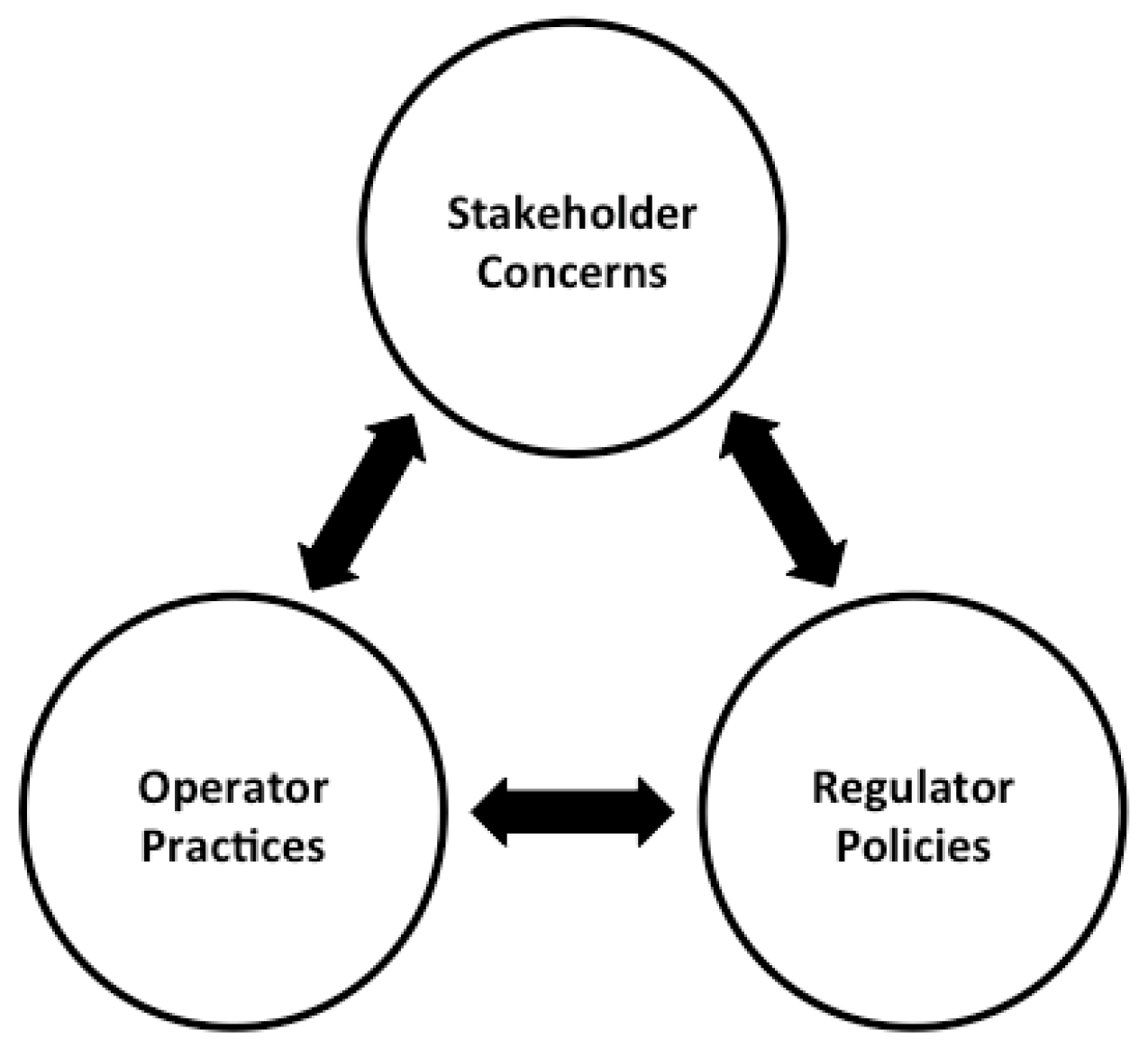
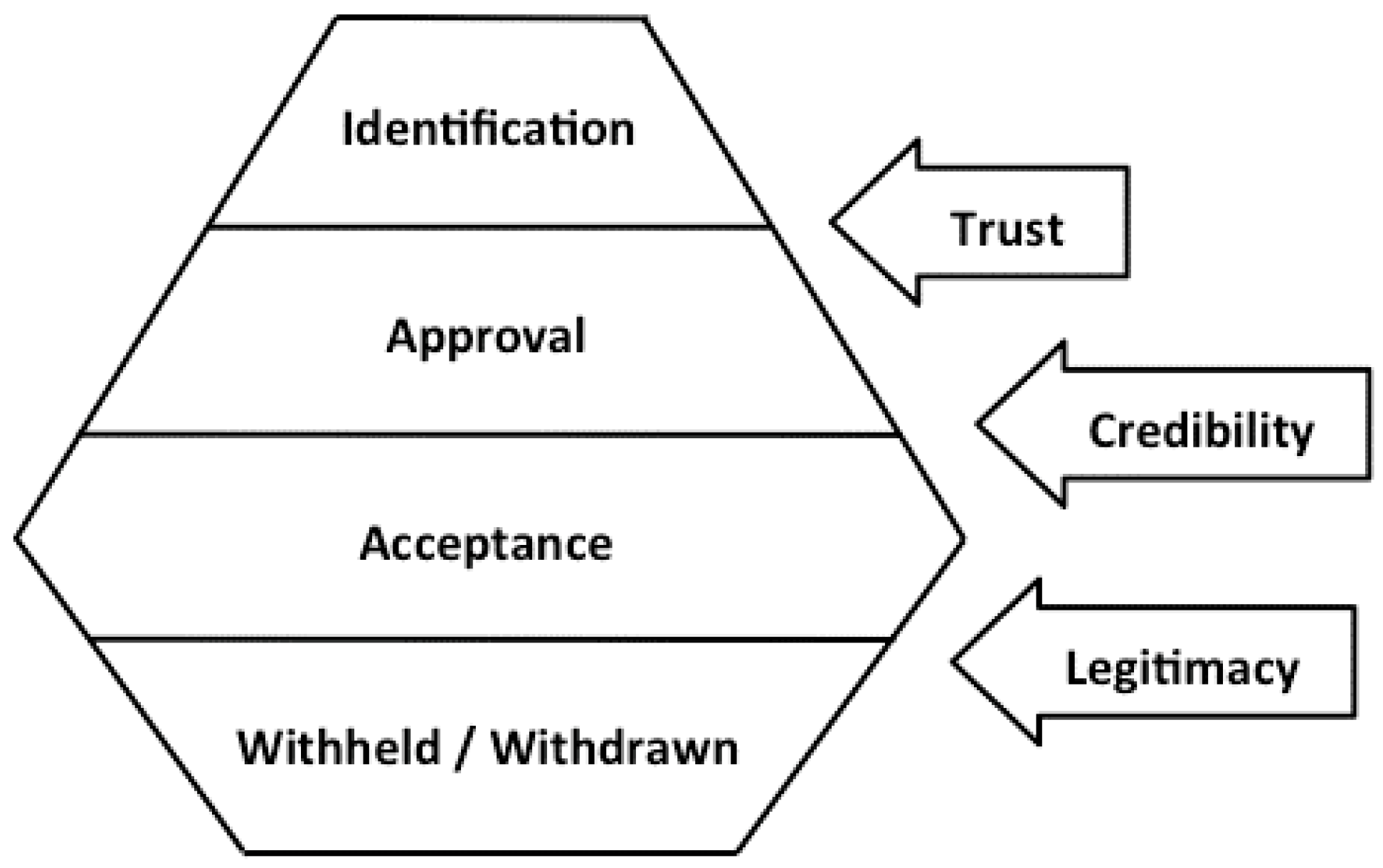
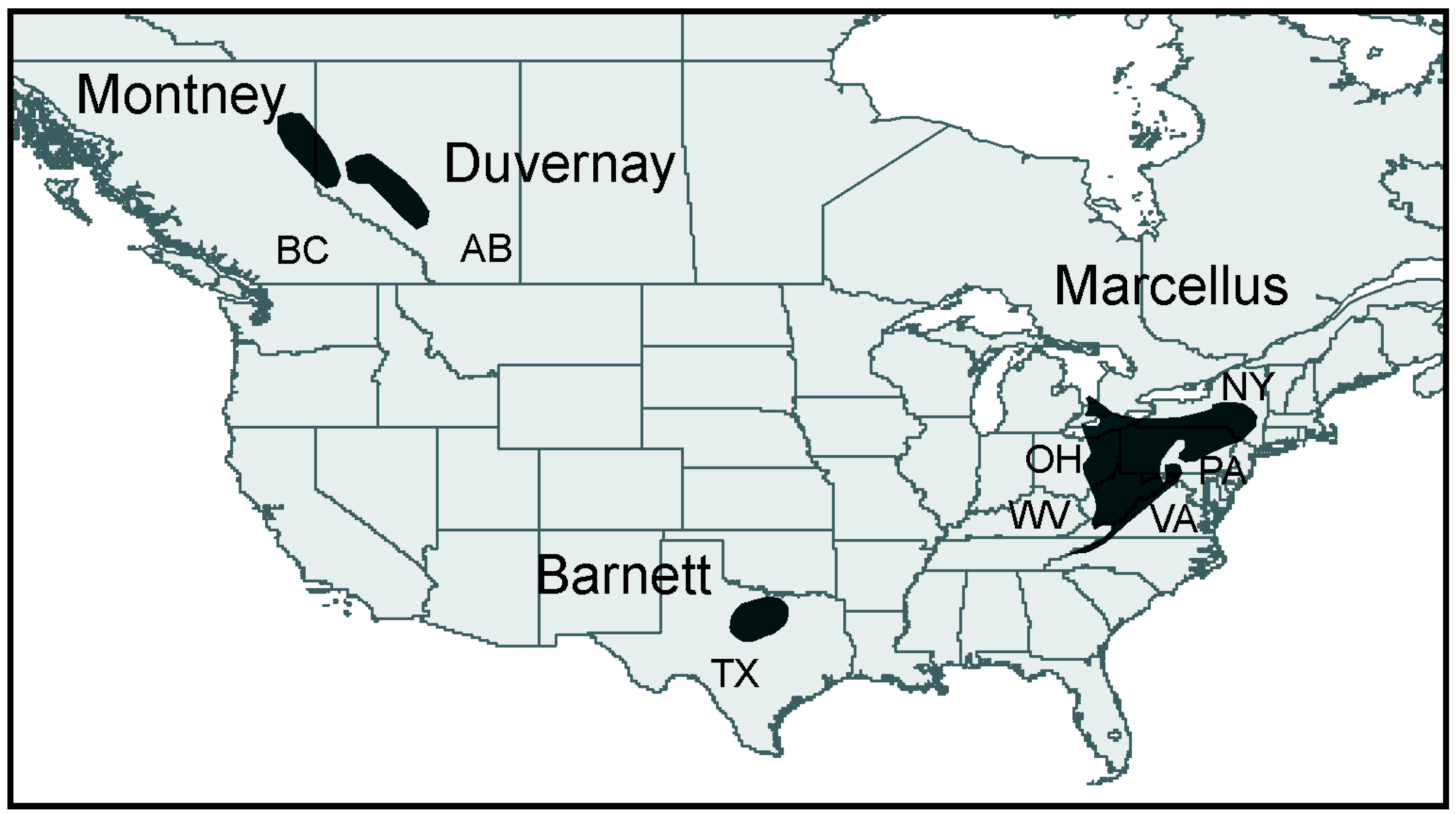

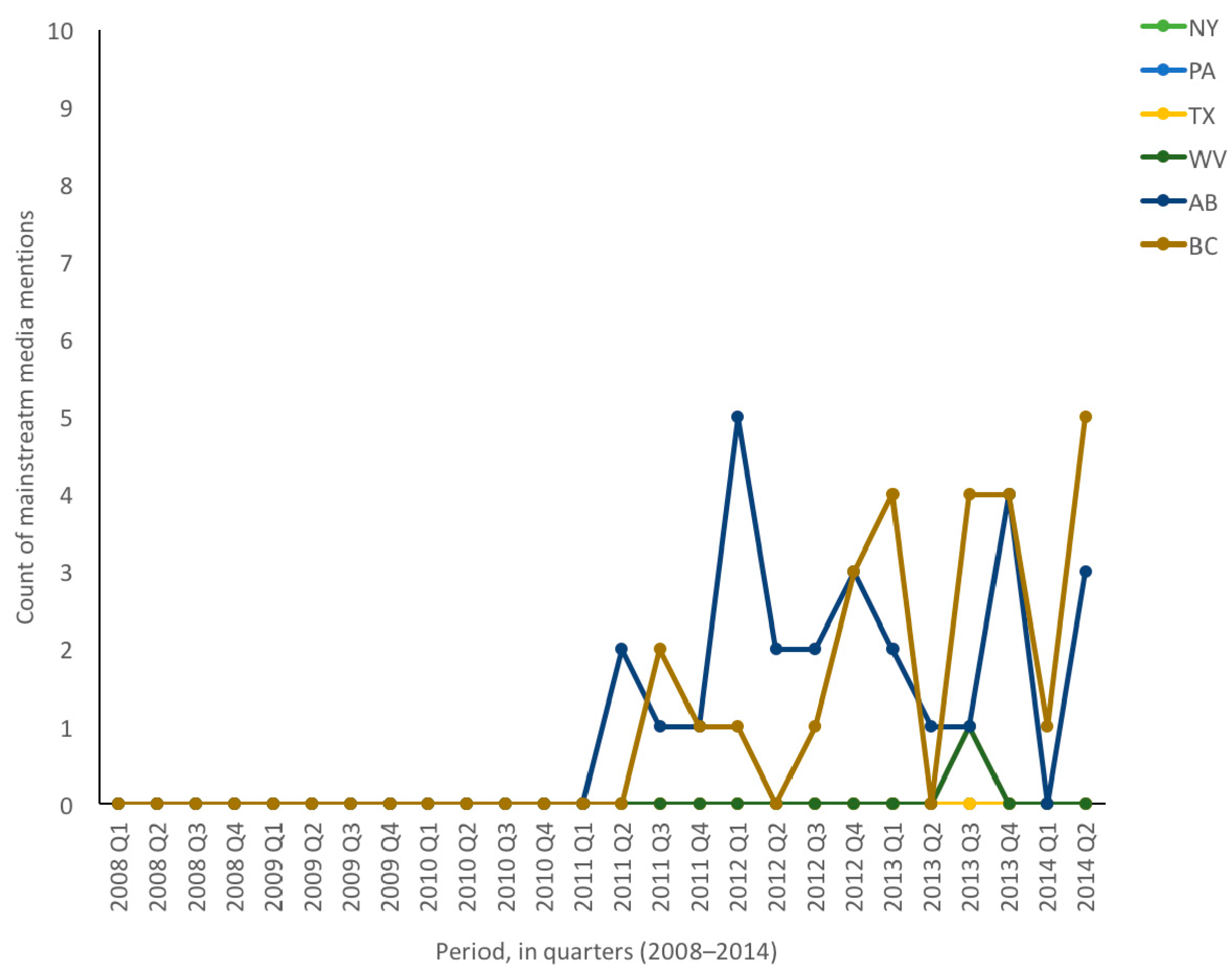


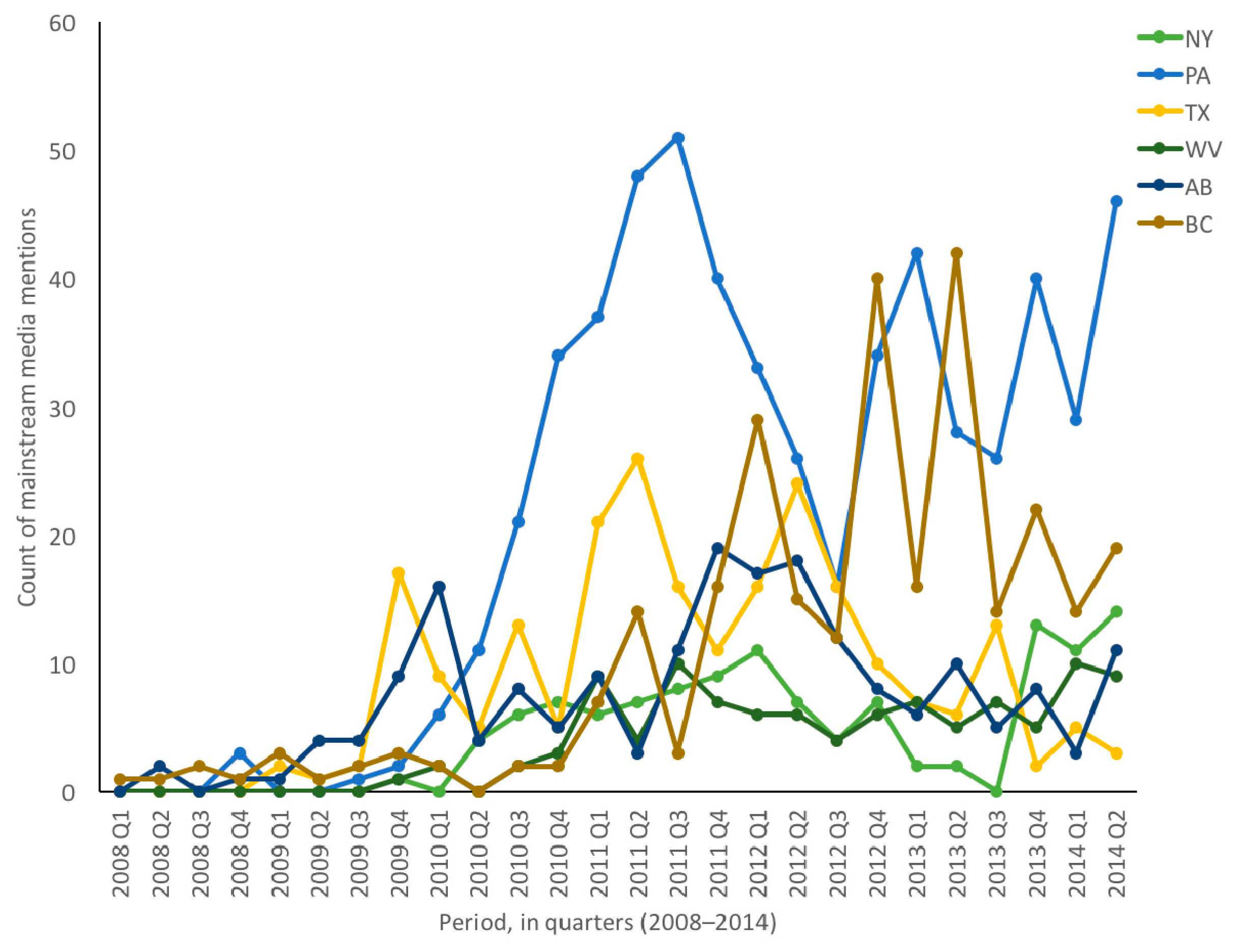
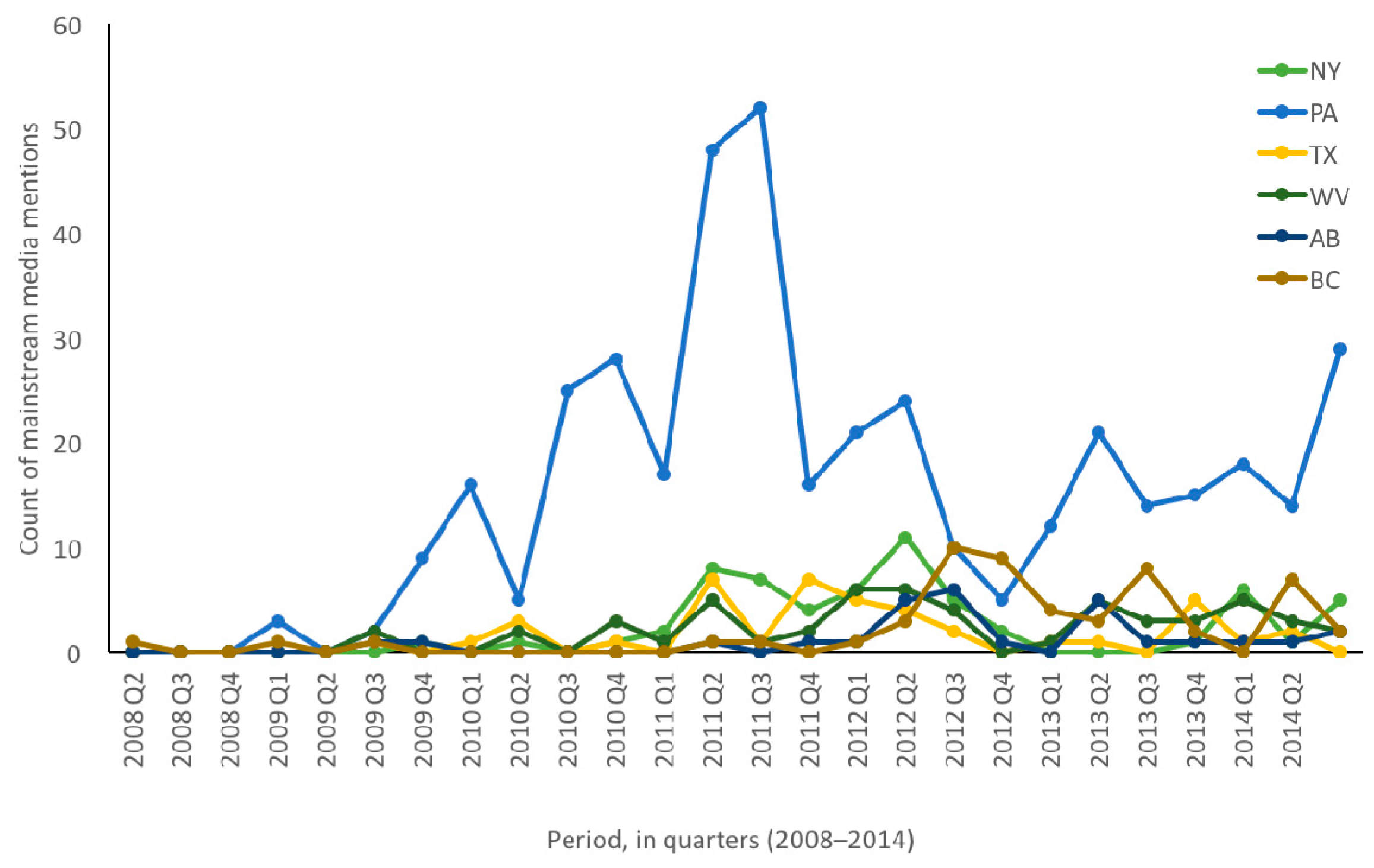
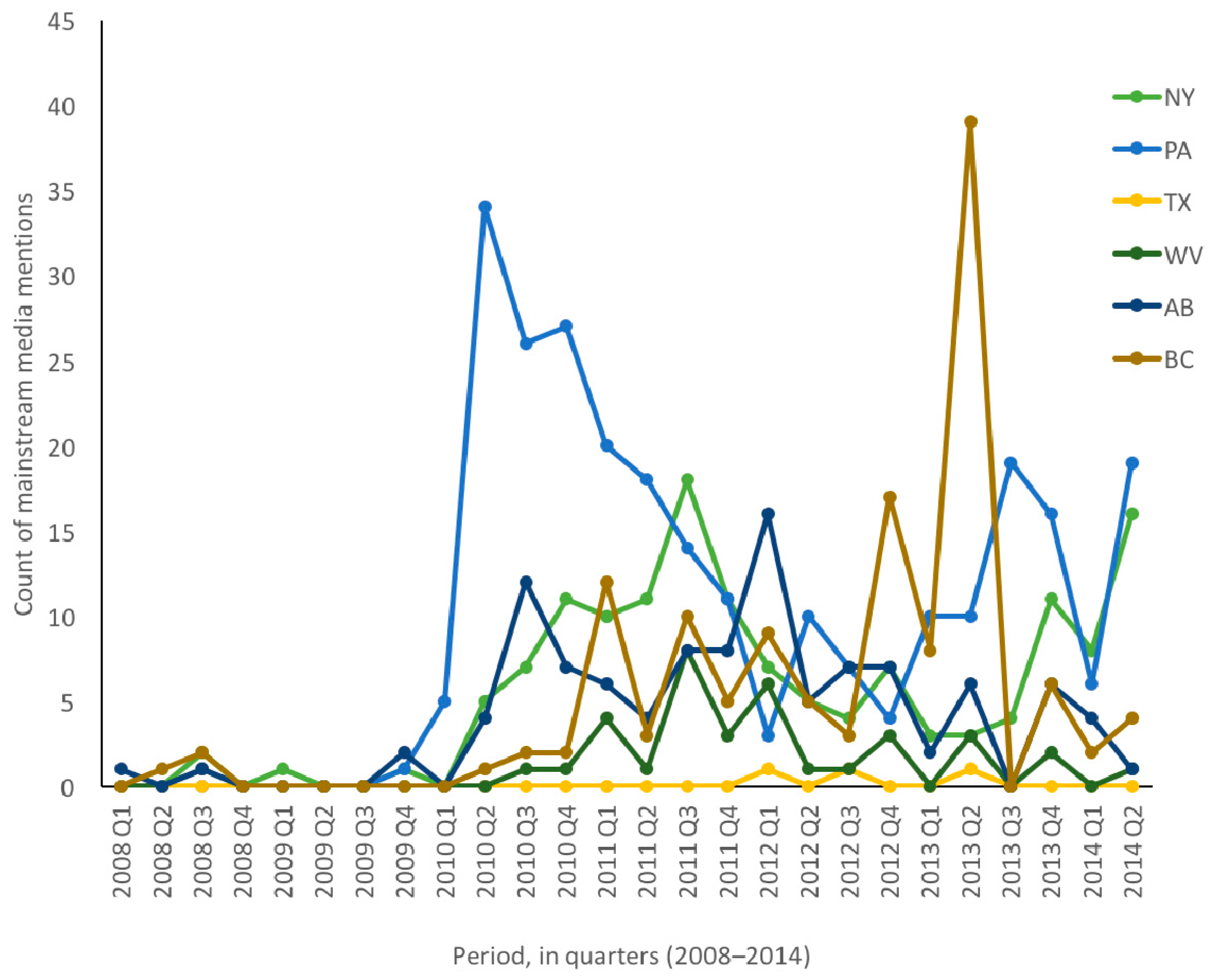
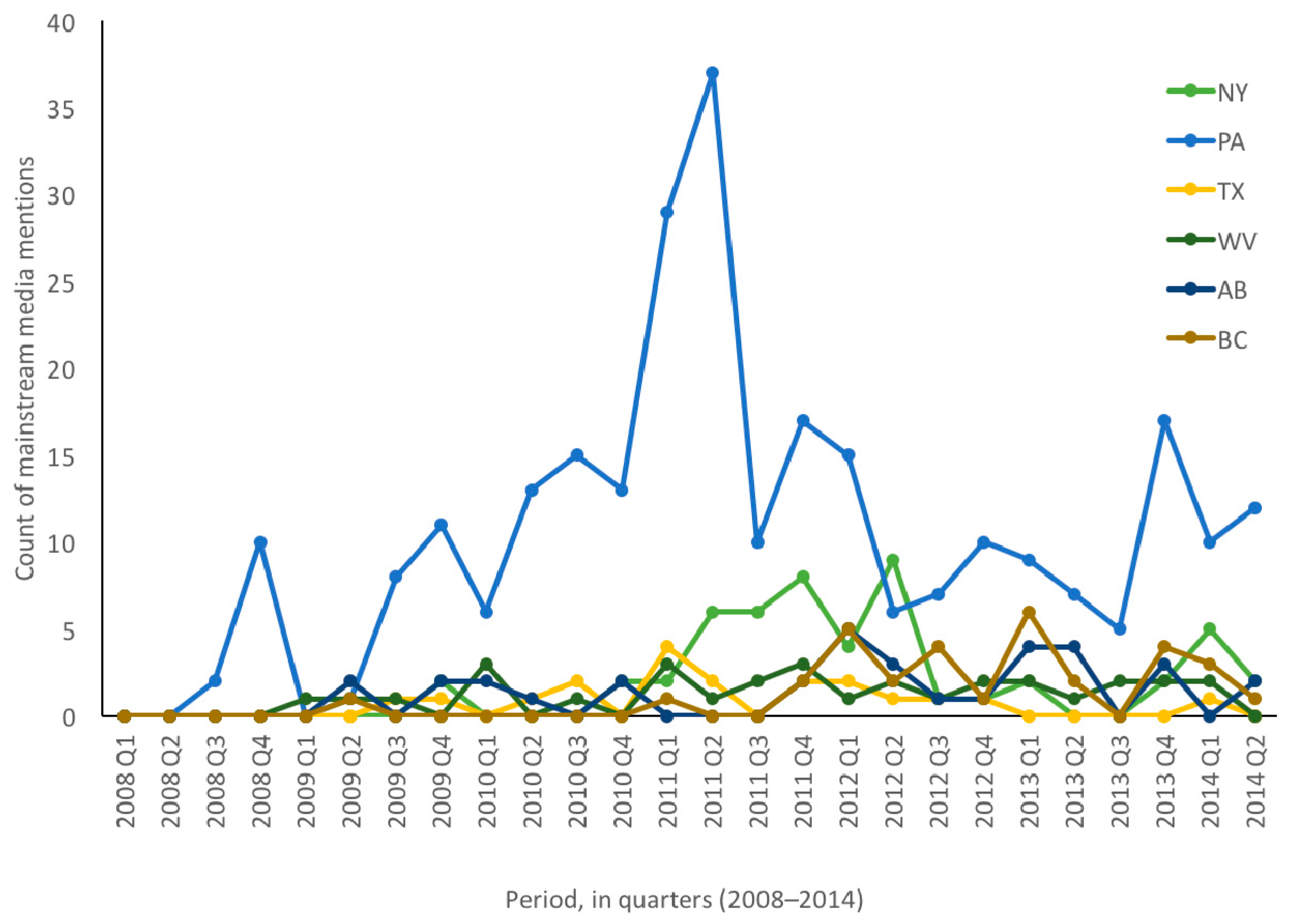
| Term | Key Characteristics |
|---|---|
| Social License to Operate (SLO) | Specific to each unique project Process: legitimacy, credibility, full trust Consistent consultation with stakeholders over life of project Not guaranteed based on past success/failure of firm |
| Corporate Social Responsibility (CSR)/Corporate Responsibility (CR) | Firm-driven policy, may be overarching Firm is willing (not required) to act Does not require action on specific projects for success Variation between firms, industries |
| Stakeholder Management | Can be selective, based on vested and non-vested stakeholders Broader social concerns are not necessarily included Firm interested in satisfying a defined group of stakeholders |
| Sustainability/Sustainable Development | Value-based Broad societal concept that transcends the firm Can refer to environmental, social, or economic sustainability |
| Cumulative Effects | Extends beyond firm policies and procedures Collaborative management, may be inter-firm and multi-industry Effects are successive and incremental in nature |
| Barnett | Duvernay | Marcellus | Montney | |
|---|---|---|---|---|
| Areal extent of shale | 13,000 km2 | 7500 km2 (wet gas window) | 167,300 km2 | 130,000 km2 |
| Original volume of gas in place (Tcf) | 225–750 | 443 | 1500 | 178 (AB) 271 (BC) |
| Approximate wastewater volumes | 10,600 m3/well | 50,000 m3/well | 11,500–26,500 m3/well | 10,000–25,000 m3/well |
| Regulators involved | TX Railroad Commission; TX Commission on Environmental Quality | AB Energy Regulator | PA Department of Environmental Protection; OH Department of Natural Resources; NY Department of Environmental Conservation; WV Department of Environmental Protection | AB Energy Regulator; BC Oil and Gas Commission |
| Year | Quarter | NY | PA | TX | WV | AB | BC |
|---|---|---|---|---|---|---|---|
| 2008 | Q1 | 0 | 0 | 0 | 0 | 0 | 0 |
| Q2 | 0 | 0 | 0 | 0 | 2 | 1 | |
| Q3 | 0 | 0 | 0 | 0 | 0 | 0 | |
| Q4 | 0 | 0 | 0 | 0 | 2 | 0 | |
| 2009 | Q1 | 0 | 0 | 0 | 0 | 1 | 0 |
| Q2 | 0 | 1 | 0 | 0 | 1 | 0 | |
| Q3 | 0 | 1 | 0 | 0 | 3 | 0 | |
| Q4 | 0 | 0 | 0 | 0 | 2 | 0 | |
| 2010 | Q1 | 0 | 3 | 0 | 0 | 2 | 0 |
| Q2 | 0 | 0 | 0 | 0 | 0 | 0 | |
| Q3 | 0 | 1 | 0 | 0 | 9 | 5 | |
| Q4 | 0 | 1 | 0 | 0 | 4 | 2 | |
| 2011 | Q1 | 0 | 1 | 0 | 0 | 1 | 0 |
| Q2 | 1 | 3 | 0 | 0 | 8 | 2 | |
| Q3 | 0 | 1 | 2 | 0 | 10 | 3 | |
| Q4 | 0 | 1 | 1 | 0 | 5 | 3 | |
| 2012 | Q1 | 1 | 0 | 2 | 0 | 7 | 5 |
| Q2 | 2 | 2 | 1 | 0 | 10 | 4 | |
| Q3 | 0 | 0 | 0 | 0 | 5 | 6 | |
| Q4 | 0 | 0 | 0 | 2 | 4 | 10 | |
| 2013 | Q1 | 0 | 1 | 1 | 0 | 8 | 23 |
| Q2 | 0 | 0 | 2 | 2 | 7 | 10 | |
| Q3 | 2 | 1 | 2 | 0 | 6 | 8 | |
| Q4 | 0 | 2 | 0 | 0 | 5 | 17 | |
| 2014 | Q1 | 0 | 0 | 0 | 0 | 1 | 14 |
| Q2 | 1 | 4 | 0 | 0 | 9 | 11 |
| Jurisdiction | General Concerns | Wastewater Concerns | Political Concerns | Total |
|---|---|---|---|---|
| AB | 858 | 29 | 177 | 1064 |
| BC | 892 | 56 | 177 | 1125 |
| NY | 718 | 62 | 234 | 1014 |
| PA | 2430 | 412 | 589 | 3431 |
| TX | 471 | 44 | 117 | 632 |
| WV | 538 | 58 | 128 | 724 |
| Total | 5907 | 659 | 1422 | 7988 |
| Jurisdiction | Injection Well | Impound-Ment | Treatment | Reuse | Discharge | Illegal Dumping | Total |
|---|---|---|---|---|---|---|---|
| AB | 10 | 2 | 32 | 14 | 3 | 0 | 61 |
| BC | 3 | 1 | 33 | 18 | 17 | 0 | 72 |
| `NY | 2 | 2 | 54 | 6 | 16 | 0 | 151 |
| PA | 26 | 74 | 274 | 49 | 106 | 5 | 619 |
| TX | 3 | 0 | 20 | 3 | 1 | 3 | 18 |
| WV | 14 | 3 | 32 | 5 | 12 | 3 | 66 |
| Total | 68 | 82 | 447 | 95 | 155 | 11 | 858 |
| Jurisdiction | Total Concern Mentions | Total Accountability Mentions | Concern to Accountability Ratio |
|---|---|---|---|
| AB | 692 | 126 | 5 |
| BC | 715 | 112 | 6 |
| NY | 672 | 7 | 96 |
| PA | 2822 | 30 | 108 |
| TX | 414 | 4 | 105 |
| WV | 496 | 10 | 50 |
© 2016 by the authors; licensee MDPI, Basel, Switzerland. This article is an open access article distributed under the terms and conditions of the Creative Commons Attribution (CC-BY) license (http://creativecommons.org/licenses/by/4.0/).
Share and Cite
Gehman, J.; Thompson, D.Y.; Alessi, D.S.; Allen, D.M.; Goss, G.G. Comparative Analysis of Hydraulic Fracturing Wastewater Practices in Unconventional Shale Development: Newspaper Coverage of Stakeholder Concerns and Social License to Operate. Sustainability 2016, 8, 912. https://doi.org/10.3390/su8090912
Gehman J, Thompson DY, Alessi DS, Allen DM, Goss GG. Comparative Analysis of Hydraulic Fracturing Wastewater Practices in Unconventional Shale Development: Newspaper Coverage of Stakeholder Concerns and Social License to Operate. Sustainability. 2016; 8(9):912. https://doi.org/10.3390/su8090912
Chicago/Turabian StyleGehman, Joel, Dara Y. Thompson, Daniel S. Alessi, Diana M. Allen, and Greg G. Goss. 2016. "Comparative Analysis of Hydraulic Fracturing Wastewater Practices in Unconventional Shale Development: Newspaper Coverage of Stakeholder Concerns and Social License to Operate" Sustainability 8, no. 9: 912. https://doi.org/10.3390/su8090912
APA StyleGehman, J., Thompson, D. Y., Alessi, D. S., Allen, D. M., & Goss, G. G. (2016). Comparative Analysis of Hydraulic Fracturing Wastewater Practices in Unconventional Shale Development: Newspaper Coverage of Stakeholder Concerns and Social License to Operate. Sustainability, 8(9), 912. https://doi.org/10.3390/su8090912






